Do you know about the Adachi Ward in Tokyo? It is one of the 23 wards of Tokyo, with various unique neighbourhoods and areas, along with different things to do and sights to see. If you are wondering what is Adachi ward, the different areas inside Adachi, the best things to do, history, accommodation and more, check out this ultimate Adachi ward area guide.
What is Adachi City Ward?

Adachi-ku is one of the wards of Tokyo, and is classified in the eastern part of the 23 wards of Tokyo. Located at the extreme end of Tokyo, adjacent to Saitama Prefecture to the north, Adachi-ku is a residential area and green zone spreading around the Sumida River and the Arakawa River, and is still developing, retaining shades of an old downtown area. We will introduce some of the characteristic spots of Adachi Ward, including its charms.
Adachi-ku, located in the northeastern part of Tokyo’s 23 wards, used to be known as a low-income town, where residents play pachinko all the time. Kannana-dori Avenue, which circles around the edge of Tokyo, is lined with huge pachinko parlours and their billboards, and there are many ATM corners for salaried money lenders and “business supermarkets” that are extremely inexpensive. And then there is the excessive number of metropolitan housing for the low-income class. This is the true nature of Adachi Ward.
It is true that there are many lower-income households here, but there are also many people who live comfortably and affordably in this place. From a different perspective, rent is cheap, there are many cheap supermarkets and delicious noodle shops, and there is no better place to live.
Living in Adachi City Ward

It is known that many of Adachi’s residents have been dragged into the Yankee (gangster) culture, and they can carry their daily lives within a 5-kilometer radius. It is not uncommon for parents and children to have gone to the same school, or for the parents’ generation of bullies and bullied children to be in the same school and have the same relationship with the children’s generation.
Because the downtown area is full of people with this kind of culture, most of the new residents who move in from other areas are from the northern Kanto and Tohoku regions, who are not averse to the yankee culture.
Adachi Ward’s university enrollment rate is also the lowest among the 23 wards, at 38.9% (2014). Many junior high schools and high school graduates go on to become “craftsmen,” and their normal lifestyle is to go shopping at discount stores in a Yankee-spec light car with a black light shining underfoot.
History of Adachi City Ward
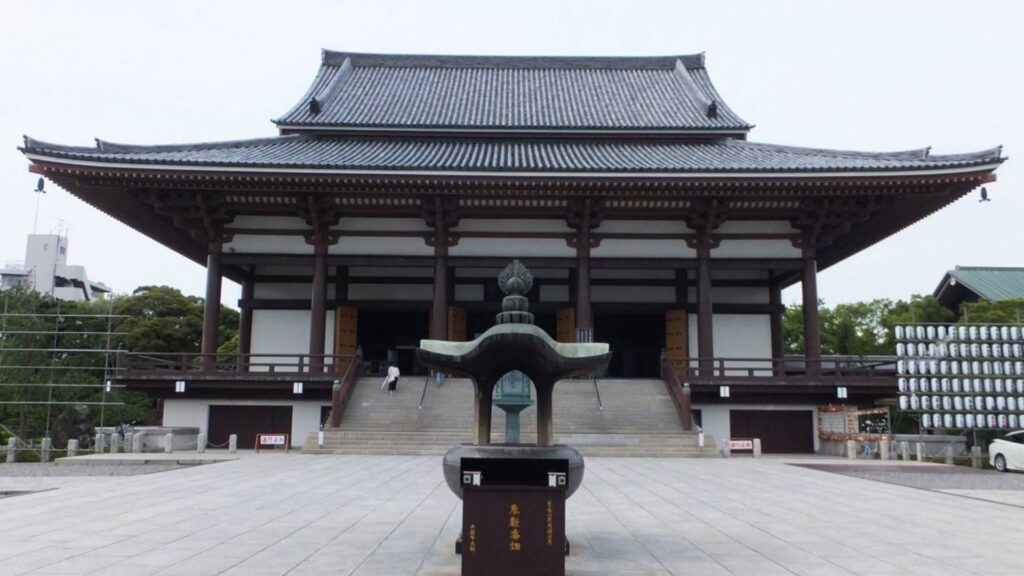
Before the Edo period, this region was a logistics hub with a lot of traffic, but the Adachi area began to grow significantly by Tokugawa Ieyasu. This was due to the restoration of the Ayase River and the drawing of water from the Tone River, which led to a dramatic development of agriculture.
People cultivated land that had previously been marshland and vigorously grew vegetables and rice.
In particular, the construction of the Senju Bridge dramatically revitalised the exchange with Edo.
In the Meiji period (1868-1912), factories for brick, steel, leather, and other products began to be built along the Sumida River, marking the first step toward becoming an industrial city.
At that time, the area frequently suffered from flood damage from the Arakawa River, but the construction of a spillway made life safer.
In the Taisho era (1912-1926), the population grew rapidly as victims of the Great Kanto Earthquake migrated from the city centre.
In the Showa era (1926-1989), 10 towns and villages were merged to form Adachi Ward.
Then, farmland was reclaimed and a rush to build factories and houses began instead.
Transportation access, such as Beltway 7 and expressways, developed dramatically, making it easier to interact with the city centre, and industries became more and more active.
Characteristics of Adachi City Ward

Adachi-ku is characterised by its many shrines, temples, and shrines. The number of shrines and temples in Adachi-ku is so large that each town has its own shrines.
Adachi Ward, which is well known for having produced many celebrities and entertainers of the past, has become a steadfastly popular area due to its convenience to both the city centre and outside the city, and the city’s stable safety and atmosphere.
Adachi-ku has a warm and humid climate, with a warm and humid summer due to the warm and humid monsoon from the Pacific Ocean, and a cool and dry winter due to the cold and dry monsoon blowing from the continental to the oceanic side, which is the opposite of the summer.
There are numerous spots in the district where one can easily get in touch with nature and fully enjoy nature in each of the four seasons.
The annual fireworks festival is held in July, and the Arakawa riverbed is the venue. It is usually held on the last Thursday in July. About 12,000 fireworks are launched into the night sky, attracting a total of hundreds of thousands of people every year.
The fireworks are launched from the Senju side of the Arakawa River and are mainly viewed from the north or south banks of the Arakawa River, but special seats (reservations required) have been specially prepared by the Tourism Exchange Association. For viewing, it is convenient to use the nearest stations, Kitasenju Station on each line or Adachi-Kodai Station on the Toneri Liner.
Areas and stations of Adachi City Ward
Chiyoda Line & JR Joban Line
Kita Senju 北千住

The largest city in Adachi Ward. The austere streetscape was opened based on the old Senjujuku. The area is located in the middle of the city, sandwiched between the Sumida River and the Arakawa River. Adachi-ku residents are proud of the high level of development in front of the station, and they even have a Marui shopping mall now. Tokiwa-dori Avenue, directly above the Chiyoda subway line at the west exit of the station, is a high-density entertainment district.
Ayase 綾瀬
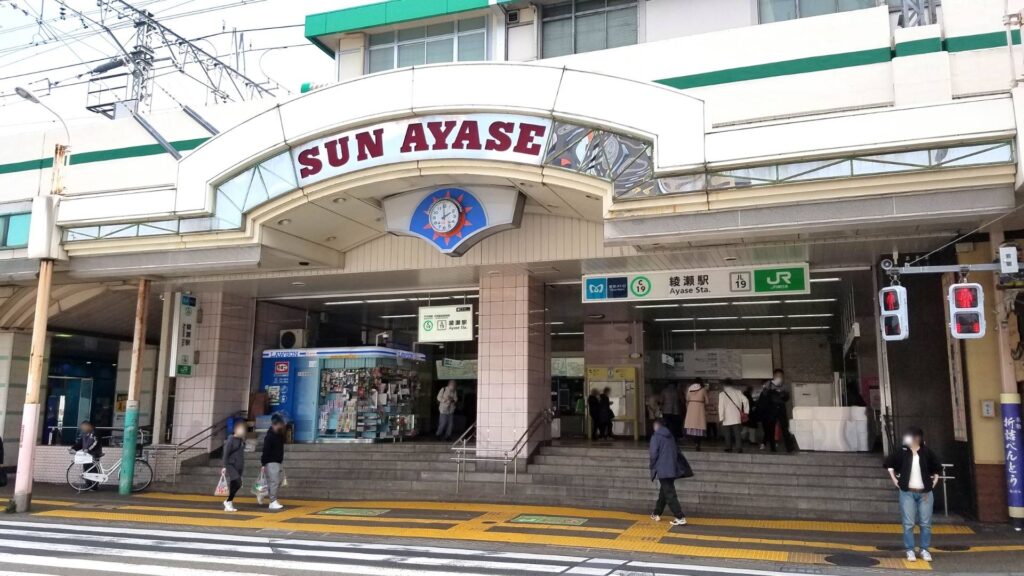
The site of the concrete murder has made the legend of Adachi-ku DQN unshakeable. Next door is the Kosuge Prison. The first thing you want to eat when you get out of the shabbiness is a shish-kebab skewer at Kotani. Panda Group Ajiyasu is loved by Ayase residents.
Kita Ayase 北綾瀬

The farthest end of Adachi Ward, reached by the Chiyoda Line. Beyond Mutsuki-cho is Yashio City in Saitama Prefecture. The Ayase rail yard is an interesting sight and there is a large pachinko parlour on Kannana-dori. The headquarters of the super-cheap ABS wholesale centre is located in Tatsunuma.
Kameari 亀有

A short distance from the north exit of Kameari Ryosan Street is Towa, Adachi-ku. A unique arcade town with only a skeleton.
Tobu Isezaki Line and Keisei Main Line
Horikiri 堀切

The number one lonely station in the Tokyo metropolitan area. The junior high school where “3 years B class Kinpachi sensei,” known to middle-aged and older, was set, has gone to “Tokyo Future University”. In front of the station is the Arakawa river bank. There is not even a convenience store in front of the station and the only food shop is “Ramen Miyuki”.
Ushida 牛田

The nearest station to Yanagihara at the east end of Senju. It is a transfer station for the Keisei Line, but the name of the station is completely different from “Keisei Sekiya”.
Senju Ohashi 千住大橋

The nearest station to Adachi Market, the kitchen of Adachi Ward. In front of the station is Nikko Kaido and Senju Ohashi Bridge, and across the bridge is Minami-Senju, Arakawa Ward, which is a busy shopping area. The Ramen Jiro in front of the station has a long line of people waiting in line. The legendary Ozaki House has been demolished, and memories of the area are fading.
Kosuge 小菅

This is the gateway to the Tokyo Detention Center, Japan’s world-class high-tech prison. Aum Asahara and other famous prisoners on death row are also incarcerated here. At the annual Correctional Exhibition, you can get right in front of the main jail building, but it is absolutely impossible for inmates to escape.
Gotanno 五反野
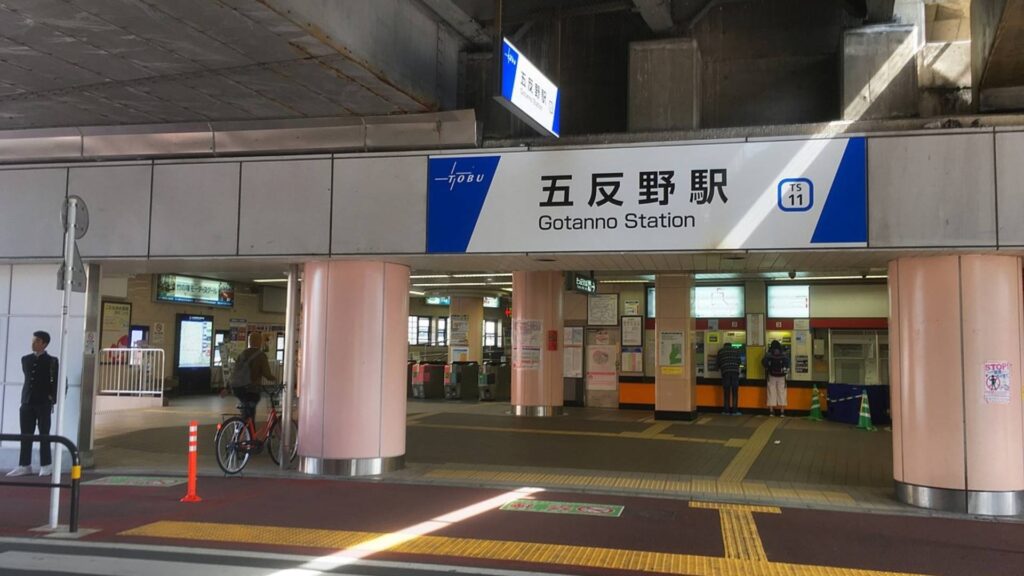
A town name that looks like it could be mistaken for Gotanda. The name Gotanno is not in the place name. The head office of Edoichi, the company that manages Sutaminataro, a buffet restaurant, is located here.
Umejima 梅島

Next station to Nishi Arai. Umejima is a place where there have been many tragic incidents, such as a family suicide and a family slaughter. Takeshi Kitano, a.k.a. Beat Takeshi, the “Kitano of the world,” was born in this town. Yumeya, a restaurant that serves ramen and gyoza for 450 yen, is also born here.
Nishi Arai 西新井

The area in front of the station is the most developed in Adachi-ku, excluding Kitasenju. Nishiarai Nouvelle, a redevelopment area on the southwest side of the station, is a newly developed condominium district popular among Tobu Isezaki Line users. The shopping street in Sekihara also has a very downtown atmosphere.
Daishimae 大師前

This is the best station to arrive at if you’re planning to visit Nishiarai Daishi. If you cross the Kan-nana highway, you will find yourself in one of the most famous Korean towns in Tokyo, with the retro and stylish Monzenmachi at your side.
Takenotsuka 竹ノ塚
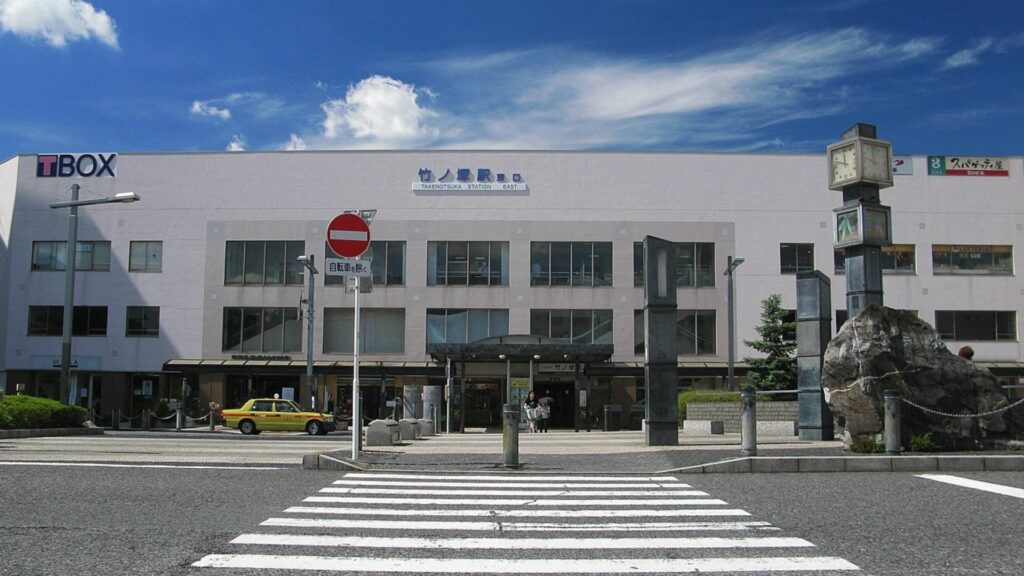
The northernmost station in Tokyo on the Tobu Isezaki Line. A storm of housing complexes, apartment complexes, and apartment blocks stretched from the prime area in front of the station. In addition to the super cheap ramen shop Takano, Niigata’s 200 yen curry shop has also moved into the area.
Tsukuba Express Line
Aoi 青井
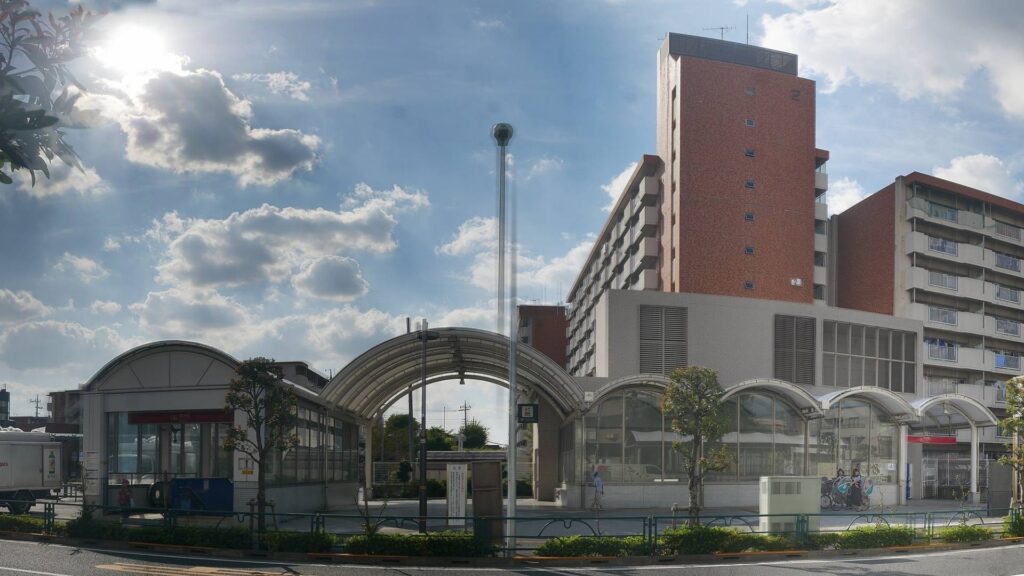
Aoi is to the left of Ayase. It is also a town of municipal housing complexes. Aoi is a town of metropolitan apartment complexes. Hyowa Street, famous for its morning market, is the main street of the town.
Nippori Toneri Liner Line
Rokumachi 足立小台
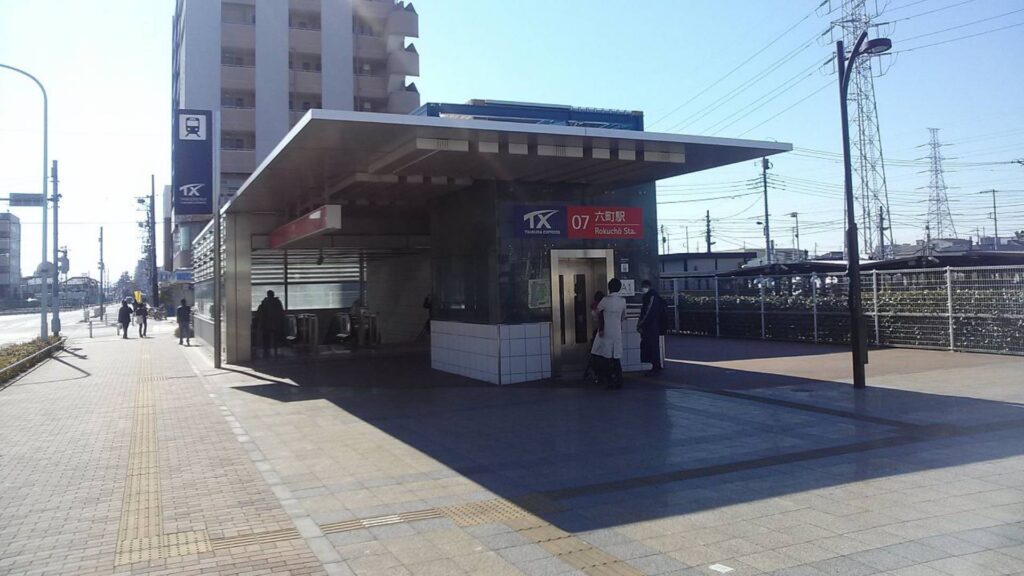
A town in the northeastern part of Adachi Ward that used to be a railroad wasteland. The Metropolitan Expressway Kahira entrance and Kannana-dori Avenue are nearby, and the percentage of residents who own cars is high, so the area in front of the station is nothing but a bleak suburb.
Adachi-Kodai 足立小台

The station was built on a long and narrow island in the middle of the Arakawa and Sumida Rivers. The only things to see are the riverbed, the bank, Shimachu and K’s Denki. The residential areas of Miyagi and Kodai in Adachi-ku extend to the west of the station, but it takes more than 10 minutes to walk there from the station.
Ogi-Ohashi 扇大橋
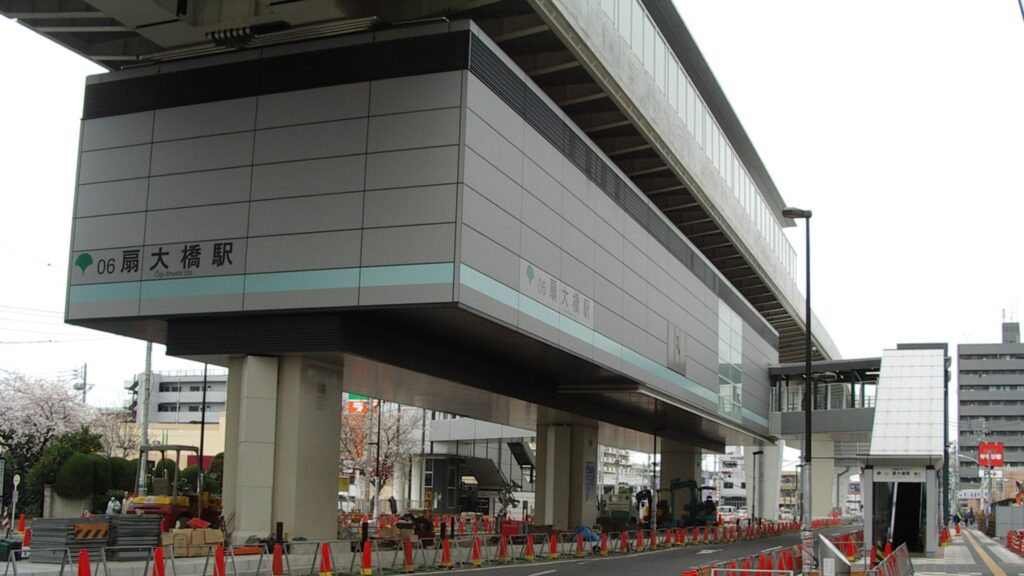
The numerous scrap metal and scrap metal collectors spread out along the Arakawa River may be remnants of the former Bataya tribe. The “Yakiniku Pyongyang-en” in front of the station is a hangout for the locals. Kohoku Bridge is one of Tokyo’s most haunted spots.
Koya 高野

The station name derives from the former Koya Village. It is only 500 meters away from the neighbouring Ougi Ohashi station. A large pachinko parlour is located in a prime location in front of the station. It is the only store that is thriving. The Yoshino Gypsum plant, which manufactures Tiger Board, is also nearby.
Kohoku 江北

Kaminumada Danchi, one of the largest metropolitan housing complexes in western Adachi-ku, is located on the west side of the station. Although the housing complex is being rebuilt due to ageing, there is an abandoned shopping street on the outskirts of the complex.
Nishiarai Daishi Nishi 西新井大師西
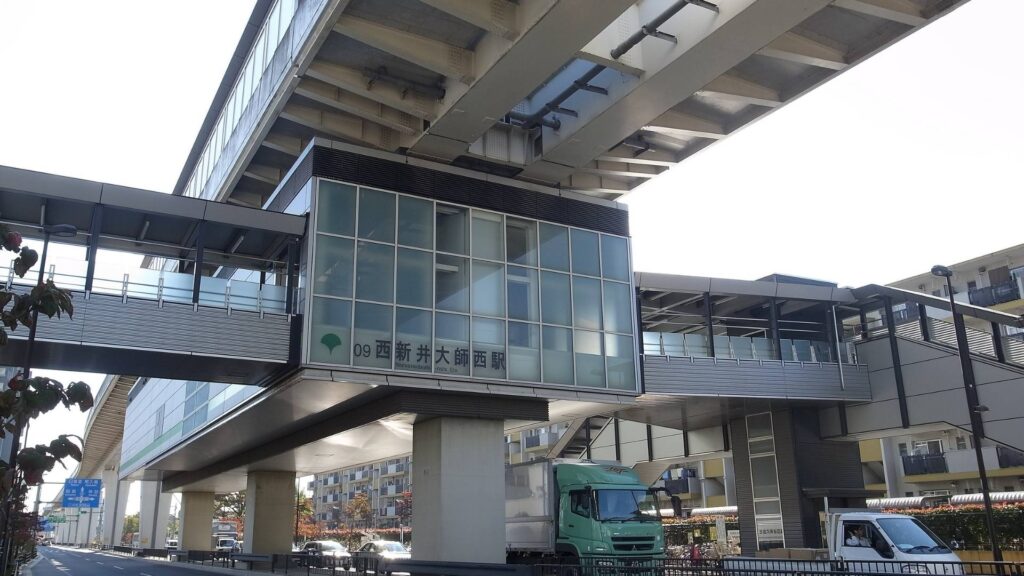
It is the closest station to Shikahama at the western end of Adachi. There are many metropolitan residences, Korean restaurants, and Korean food stores.
Yazaike 谷在家

Again, the front of the station is a metropolitan housing complex. Pachinko Kotobuki Yazaike is located along Okubashi-dori.
Toneri Park 舎人公園
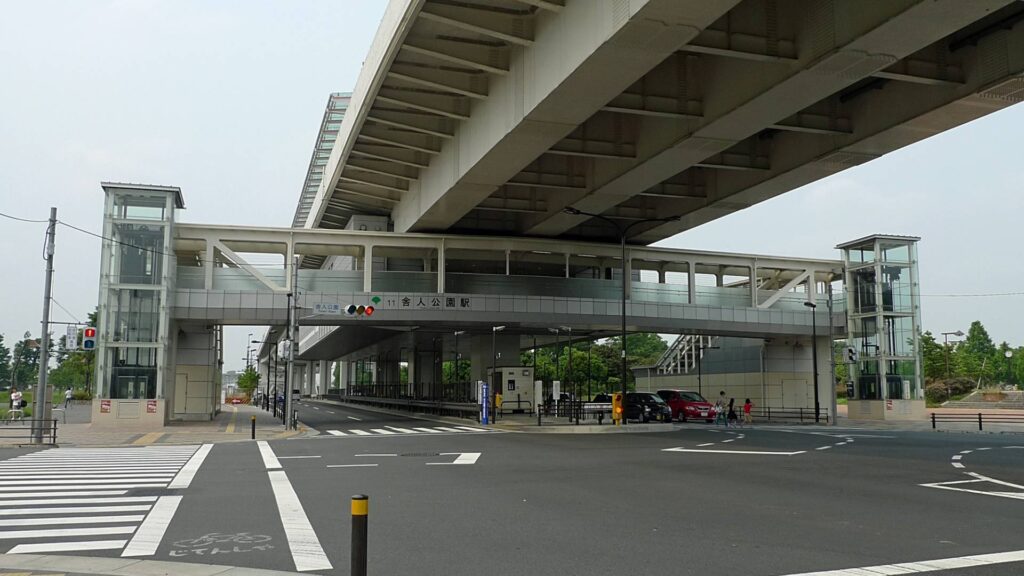
With the opening of the Nippori-Toshi Liner, Toneri Park, an oasis in the northern part of Adachi Ward, is finally seeing the light of day. It is a large park, but at night it is a social gathering place, and the public toilets are always vandalised.
Toneri and Minuma-dai Water Park舎人・見沼代親水公園

Many Adachi-ku residents could not read the name of the place “Toneri” until the Nippori-Toneri Liner started service. The last stop, Minuma-dai Shinsui Koen Station, is across the Ke Naga River, and you are in Saitama Prefecture. A huge Shimachu Mall was recently built, but the long-awaited extension of the liner to Saitama Prefecture is a pipe dream.
Other areas
Shikahama 鹿浜
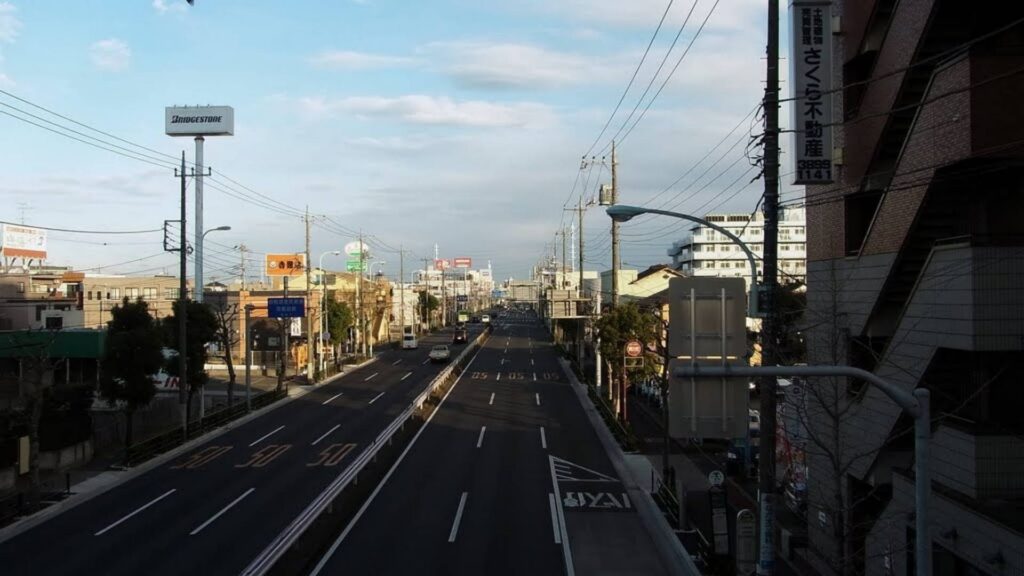
This is a neighbourhood on the edge of Adachi Ward where residents must take buses from Akabane, Oji, and Nishi Arai. Entering the town from Shikahama Bridge on Kannana-dori Avenue, the giant pachinko parlours “Maruhan” and “Kotobuki” are in a dead heat at a close distance from each other. Stamina-En, a famous yakiniku restaurant, is a place where tourists with a connoisseur’s look come with a smug look on their faces.
Shinden 新田

An isolated island in the western outskirts of Adachi-ku that can only be reached by bus. Heart Island, a large apartment complex built on a former factory site, is out of place in this area. The 40-yen bowl of kobutsuyu ramen at Sekino Shoten, a long-established candy café, is sure to please the tastebuds of the downtown crowd.
Adachi Iriya 足立入谷

Iriya 8 and 9 chome, on the west side of the Kawaguchi Line of the Metropolitan Expressway, is the very end of Tokyo. The area adjacent to the former Hatogaya City in Saitama Prefecture is a town of factories and warehouses.
Hanabatake 花畑

A 15-minute bus ride from the east exit of Takenotsuka Station takes you to the Hanabatake Danchi, a vast area where Tokyo’s lowest class people have no place to go for some reason are living together. The Hanabatake Owashi Shrine, which is said to be the birthplace of the rooster market, is famous.
What to do in Adachi Ward City Ward
Nishiarai Daishi Sojiji 西新井大師(總持寺)
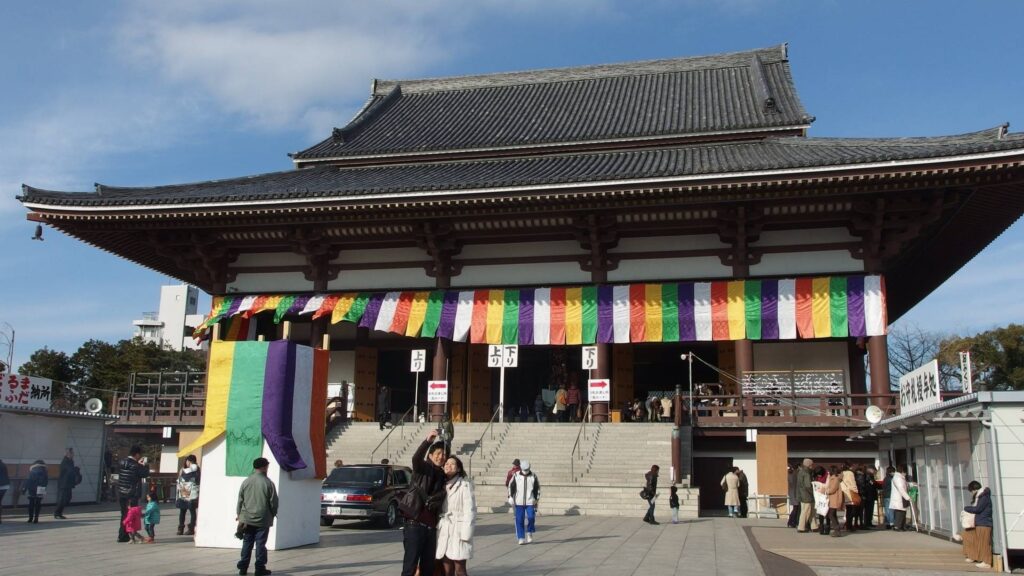
Located in Nishi Arai, Adachi-ku, Tokyo, Nishiarai Daishi Sojiji is a temple of the Toyoyama school of Shingon Buddhism, and its official name is Gochisan Henshoin Sojiji Temple.
The temple is said to have been founded in 826, when Kukai, a great Buddhist priest, stopped by Nishiarai and carved the main image of the eleven-faced Kannon to save people suffering from an epidemic of malaria.
The temple was once a place for women to pray for protection from bad luck, and now, as one of the “Three Great Masters of Kanto,” it is crowded with many Hatsumode (New Year’s visitors) every year.
2,500 peony plants of about 100 varieties bloom from early April, and the temple grounds are famous as a peony viewing spot.
Find out more about here Nishiarai Daishi Sojiji on Google maps.
Ario Nishiarai アリオ西新井

Ario Nishiarai is a large-scale shopping centre located in Nishi Arai, Adachi-ku, Tokyo, with Ito-Yokado as its anchor tenant and numerous speciality stores such as movie theatres, apparel, general merchandise, and pet stores.
Aiming to be a shopping spot that can be enjoyed by all three generations, the centre offers barrier-free access, rest areas, baby rooms, and more. There are restaurants and a food court where people with small children can enjoy, attracting many family shoppers.
Find out more about here Ario Nishiarai on Google maps.
Toneri Park 舎人公園
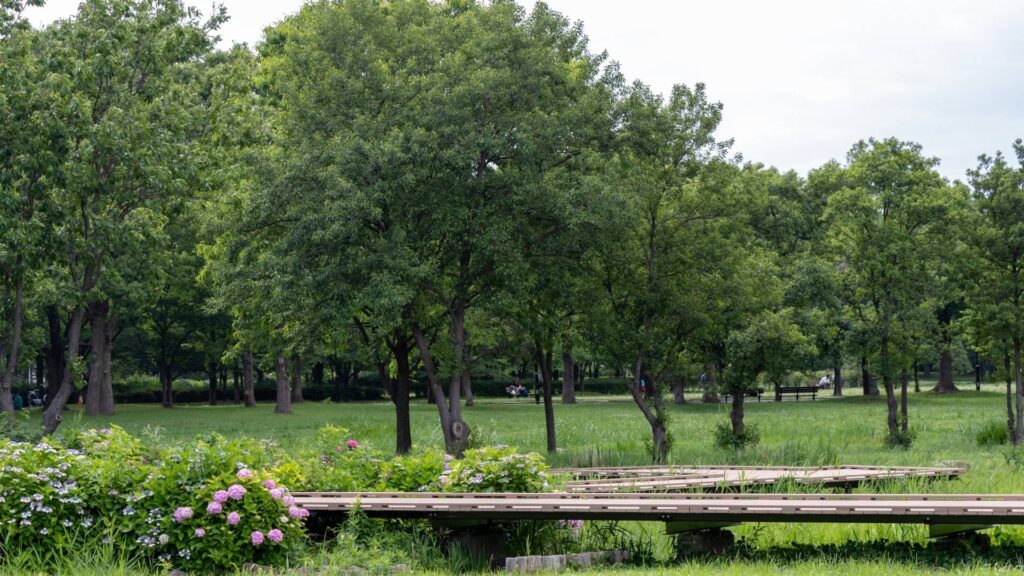
Toneri Park is a comprehensive park with multiple leisure facilities including sports facilities, a plaza, a pond, and BBQ areas, the park’s vast grounds of over 60 hectares allow visitors to enjoy the wide-open sky and a variety of nature.
The area around the cherry blossom viewing plaza is famous as one of the best cherry blossom viewing spots in Tokyo, and the “Teshino-en Senbonzakura Festival” is held during the best viewing season, with lights up and various events. There are two fountains connected by waterways, which are popular among children as jabu-jabu ponds during the summer vacation period.
Find out more about here Toneri Park on Google maps.
Adachi Park of Living Things 足立区生物園

Adachi Park of Living Things is the only aquarium and zoo in Adachi City where visitors can develop affection for and learn the value of life through interaction with living creatures.
The zoo is located in a residential area, a 20-minute walk from Takenotsuka Station. The zoo breeds about 300 species of insects, fish, amphibians, birds, and other living creatures.
The zoo is divided into five sections under the theme of “interaction, life, and symbiosis. Visitors can interact with guinea pigs and rabbits, and feed sheep every day, and the museum is crowded with families during long vacations and on weekends.
The popular “Keeper’s Recommendations” event, in which keepers introduce the animals recommended for the season, is held on the first Saturday of every month and can be registered on the day of the event.
Find out more about here Adachi Park of Living Things on Google maps.
Minumadai Water Park 見沼代親水公園
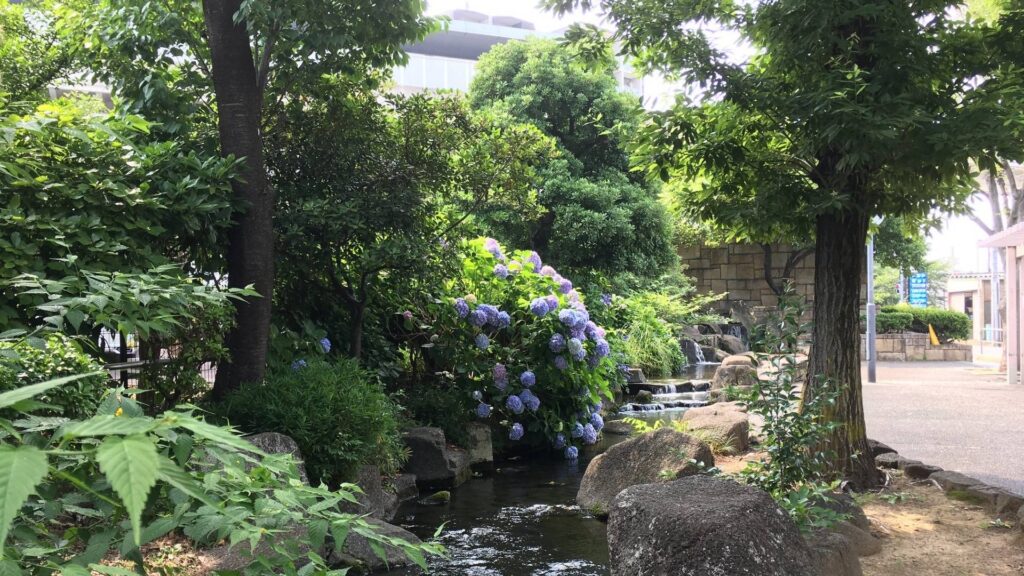
In the old days, a 1.7 km-long agricultural waterway was used to support the agricultural industry in the district, but in 1984, it was reborn as a place for recreation and relaxation.
A promenade has been developed along the irrigation canal, and many water play zones have been established, so the park is crowded with families in summer. The semi-circular swimming pool in the park is open in summer only as “Jabu Jabu Pond,” and pre-school children who are no longer in diapers can play there for free.
Find out more about here Minumadai Water Park on Google maps.
Oyata onsen Myojin Hot Spring 大谷田温泉 明神の湯

A 20-minute walk from Kita Ayase Station, Oyata onsen Myojin Hot Spring is a one-day hot spring facility is located in a residential area. The water in the bathhouse, which is made of natural hiba (Japanese cypress), is a natural sodium chloride high salt spring. It is called “hot water of heat,” and is characterised by a large amount of salt and iron it contains.
The thick ingredients adhere to the body and have an excellent heat-retaining effect. Although the water feels slightly sticky after bathing, it dries quickly and leaves the skin feeling smooth and silky smooth.
The restaurant here also offers a full menu of meals, including set menus, noodles such as soba and udon, and small bowls of snacks.
Find out more about here Oyata onsen Myojin Hot Spring on Google maps.
Iko Heritage Park 伊興遺跡公園

Iko Heritage Park is an archaeological park spreading near Iko Hikawa Shrine. Many artefacts excavated about 1,500 years ago have been found here, as well as earthenware from about 4,000 years ago, at the end of the Jomon Period, and artefacts believed to be from the early Kofun Period, about 1,600 years ago.
Because of the enormous amount of earthenware, gravestones, and other artefacts excavated, this site is thought to be an important point in the Iko Ruins where rituals were actively practised. A “square ditch tomb,” which is said to be the predecessor of the kofun tumulus, was also discovered and has been restored in the park along with a pit dwelling.
Find out more about here Iko Heritage Park on Google maps.
Adachi City Agriculture Park 足立区立都市農業公園

Among the many flower spots in Adachi, the Urban Agricultural Park is recommended in spring. The park is home to approximately 300 cherry trees, and the large flower beds along the Arakawa riverbank are filled with colourful tulips.
Find out more about here Adachi City Agriculture Park on Google maps.
Shobunuma Park しょうぶ沼公園

Summer is the season when the dazzling sun makes the greenery come alive. In early summer, the Shobu Field is filled with 6,500 hanashoubu (Japanese flowering plants) of about 80 varieties, mainly of the Edo variety, delighting the eyes of visitors.
Find out more about here Shobunuma Park on Google maps.
Hanahata Memorial Garden 花畑記念庭園
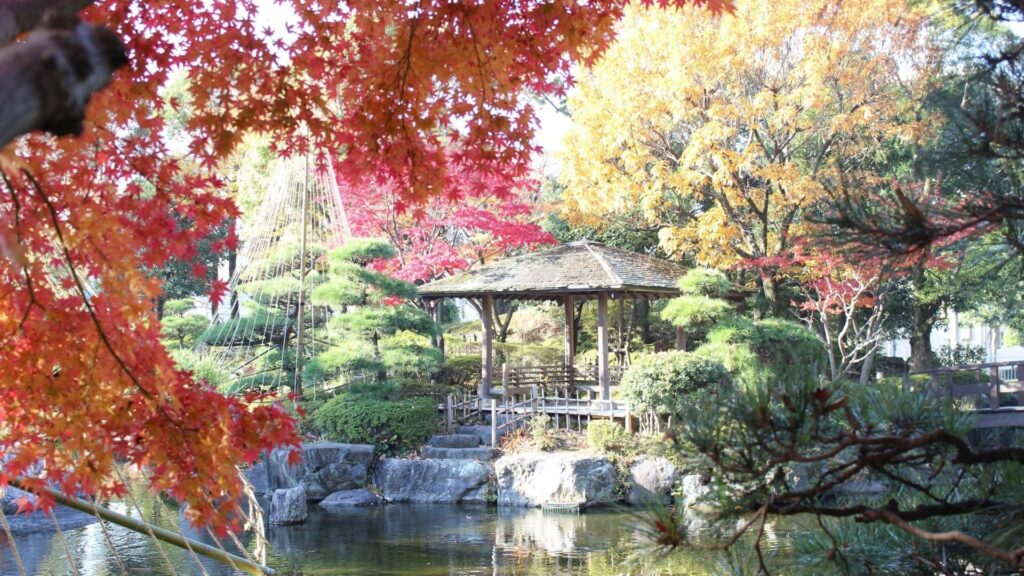
In the Japanese-style garden, visitors can hear the sound of waterfalls flowing in the garden. In the fall, Hanabatake Memorial Park is coloured with red, yellow, and various other colours. As the autumn leaves come to an end, the black pines in the garden are prepared for winter by “hanging snow”.
Find out more about here Hanahata Memorial Garden on Google maps.
Shukubamachi Shotengai 宿場町通り商店街
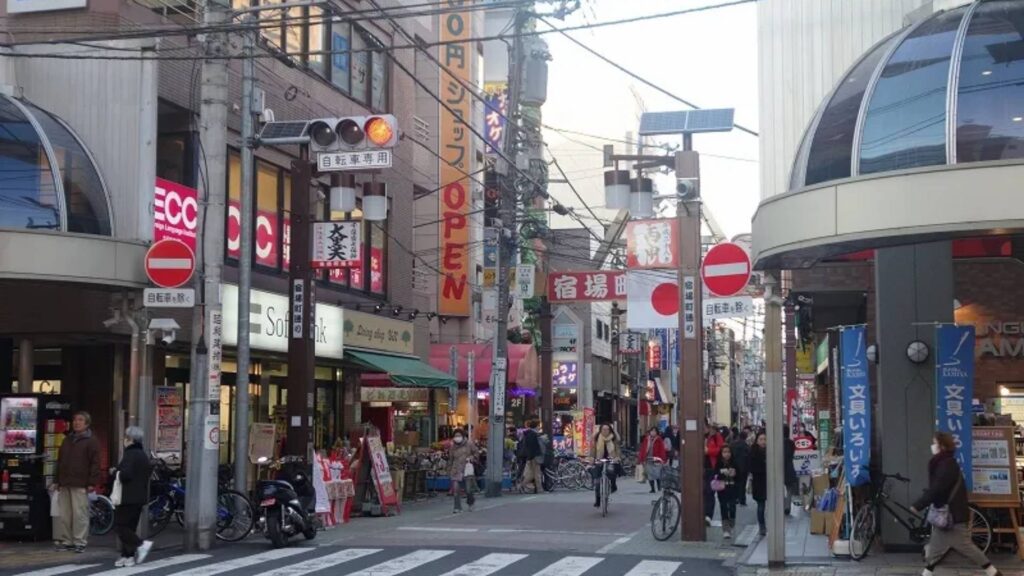
Senjujuku is an inn town on the Nikko Kaido highway, a transportation hub to the Tohoku region. The area around Senjujuku is now a shopping street called Shukubamachi Shotengai.
Not only the main street of the shopping street but also the small alleys that remain on the side of the street are a part of the fun of walking around the town. Restaurants, taverns, clothing stores, and many other stores line the street.
A must-stop during your stroll along Shukubamachi Dori is Senju Machi-no-Eki, a rest area. Inside the retro store, which was originally a fish shop established in 1923, you will find maps and panel displays that will help you learn more about Adachi Ward.
You can also ask the staff for useful information on walking around town, so be sure to take advantage of this when you visit for the first time. In addition, you can get free tea and use the restrooms, and you can also bring in your own food and drink, so we recommend taking a break while eating inside with the food you bought while walking the streets.
Walking along the old Nikko Kaido, you can see remnants of the town’s prosperous days as an inn town. For example, the Yokoyama Family Residence is a quaint building on the east side of the old Nikko Kaido. The Yokoyama family residence was built in 1855, and although the current building was renovated in 1936, it has been preserved almost exactly as it was originally built and is designated as a tangible cultural property of Adachi Ward.
There is also Yoshidaya, which has been making Senju ema (votive picture horses) for generations, and the Nagura Clinic, an orthopaedic clinic known as a famous bone-jointing doctor that has been in business since the Edo period.
Although the tour is limited to the exterior, visitors can enjoy walking around the town while thinking back to the days when the area flourished as an inn town.
Find out more about here Shukubamachi Shotengai on Google maps.
Events in Adachi City Ward
- Adachi Festivals 足立の花火
- Adachi Fireworks 一茶まつり
- Issa Festival Enma Festival 閻魔祭
- Jingan Nawa Festival じんがんなわ祭
Hotels in Adachi City Ward
Hotel Coco Grand Kitasenju
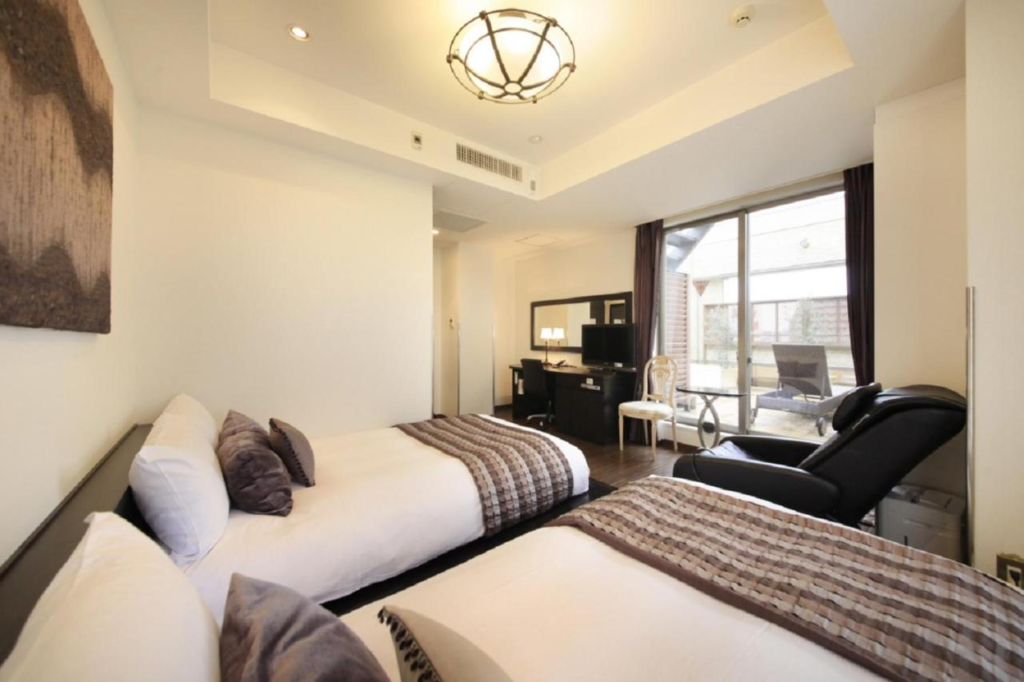
Just a 2-minute stroll from JR Kitasenju Station’s West exit, Hotel Coco Grand Kitasenju offers comfortable rooms with free WiFi and a massage chair. It features a terrace, a hot public bath and a restaurant. It also houses a pastry shop.
Rooms are air-conditioned and fitted with a flat-screen TV, a fridge and an electric kettle. Toiletries are provided in the en suite bathroom, and additional amenities are available.
Kitasenju Coco Grand Hotel has a 24-hour front desk, and it offers dry cleaning and laundry services, as well as luggage storage. Complimentary coffee is available in the lobby.
A daily breakfast buffet with Japanese and Western fare is served at the restaurant between 06:30 and 09:30. Alternatively, guests can explore shops, local restaurants and bars within 5 minutes walk around the hotel.
Guests staying at Hotel Coco Grand Kitasenju can visit Asakusa and Akihabara via a 10-minute subway ride, while the glitzy shopping areas of Ginza and Roppongi are accessible within a 35-minute subway ride away. Haneda Airport is 50-minutes away by airport bus. Narita Airport is 60 minutes away by train, connecting at JR Nippori Station.
Address: 120-0034 Tokyo-to, Adachi-ku Senju 3-40-2, Japan
Urbain Tokyo Ueno Kitasenju
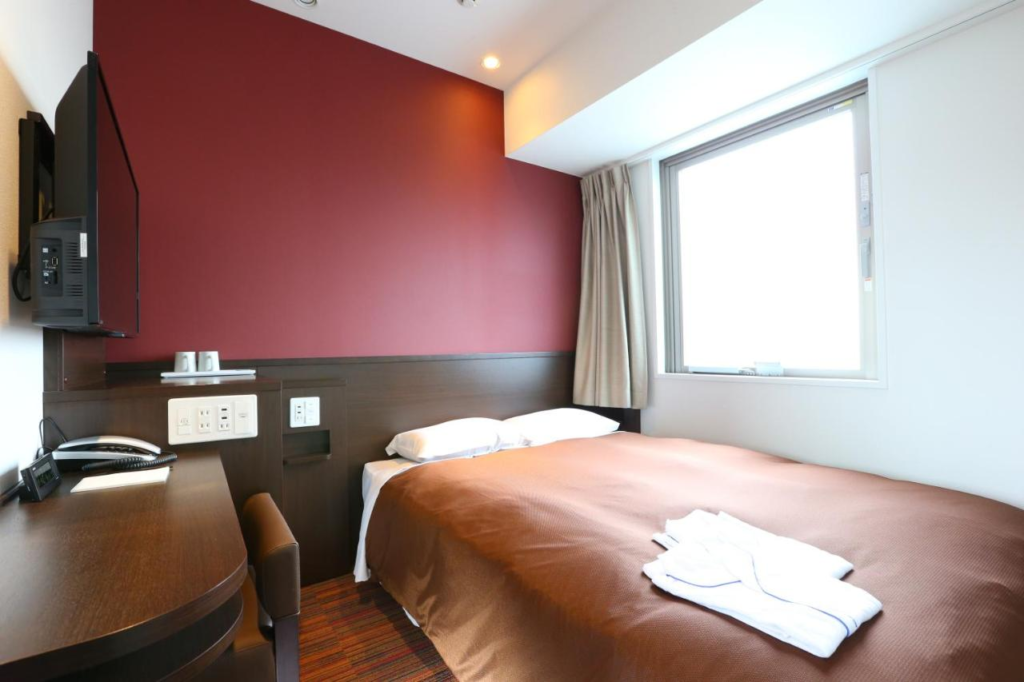
Attractively situated in the Adachi Ward district of Tokyo, Urbain Tokyo Ueno Kitasenju is situated 200 m from Kita-Senju Marui, 300 m from Yokoyama Family House and 400 m from Lumine Kita-Senju. With a shared lounge, the 3-star hotel has air-conditioned rooms with free WiFi, each with a private bathroom. The accommodation features a 24-hour front desk and luggage storage for guests.
At the hotel, rooms include a desk and a flat-screen TV. The rooms will provide guests with a fridge.
A buffet breakfast is available each morning at Urbain Tokyo Ueno Kitasenju.
Popular points of interest near the accommodation include the Art Center of Tokyo, Niji Park and Senju Shrine. The nearest airport is Tokyo Haneda International Airport, 35 km from Urbain Tokyo Ueno Kitasenju.
Address: 120-0034 Tokyo-to, Adachi-ku Senju 4-20-10, Japan
—
What do you think about Adachi Ward in Tokyo? Do you like finding out about the history and culture of this interesting area of Tokyo? There is so much history and unique things to do in this local neighbourhood of Tokyo, if you’re interested in coming for yourself, make sure to refer back to this blog.

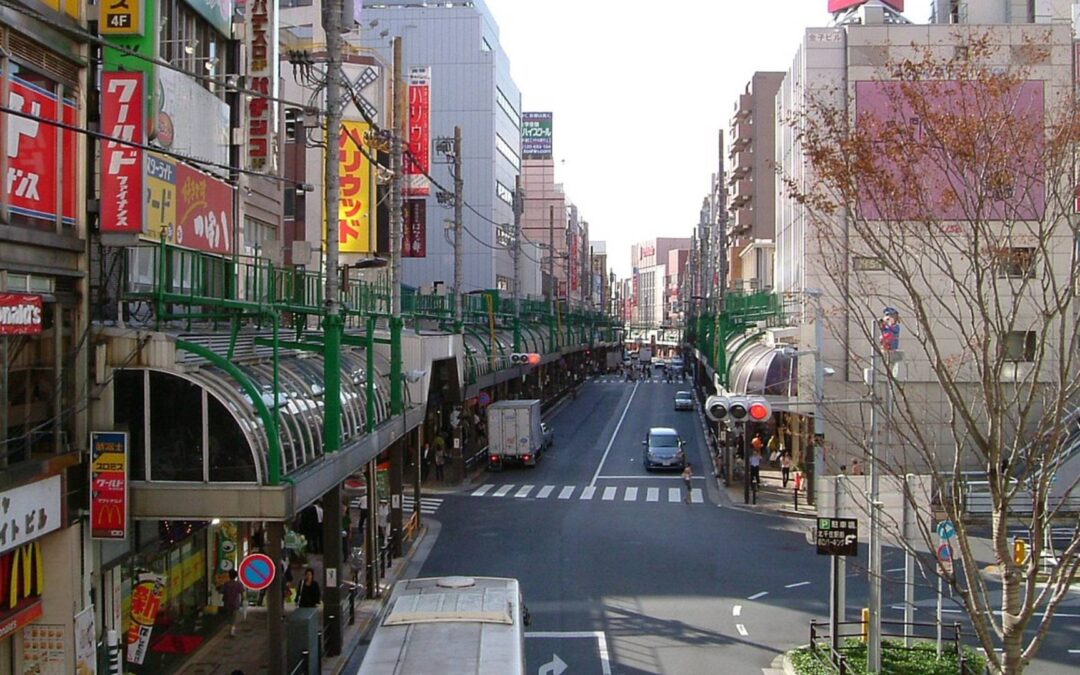
Recent Comments